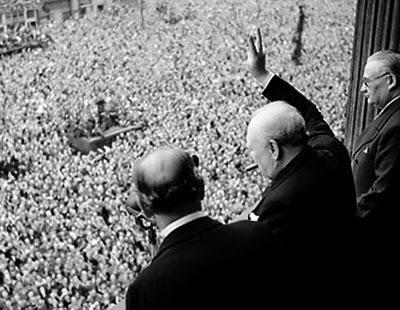The Allied Invasion (continued)
Allied forces met strong opposition from entrenched German forces in December 1944, when the Nazis launched a counterattack in Belgium and Luxembourg. This became known as the Battle of the Bulge. Initially, the attack caused the Americans to retreat as units became cut off and isolated from one another. However, leaders such as General George S. Patton, who miraculously moved his entire army of over 200,000 men from western France to Belgium, were successful in stopping German forces from advancing.

Solders in the Battle of the Bulge.
The Battle of the Bulge was the largest in Western Europe during World War II. It was also significant because it would serve as a sign that the war was ending.

Map of Belgium
In February 1945, Roosevelt, Churchill, and Stalin met in Yalta, a city in the Soviet Union. The three leaders knew the war was coming to a close and they wanted a plan for the postwar world. During the Yalta Conference, much of the focus was directed towards Germany. The three leaders decided that the country should be split into four major zones each under the direction of the major allies. Stalin agreed to allow elections into the countries that the Russians liberated. He also pledged that the Soviet Union would assist the Allied Forces in their fight against Japan.

Map and location of Yalta, Soviet Union.
Allied forces continued to bomb German cities, while the Soviets pushed into Germany from the east. The Soviets were able to capture Berlin, the German capital, and push on towards the west, where they eventually met up with American forces in April 1945.

Leaders in Yalta: Winston Churchill, Franklin Roosevelt, Joseph Stalin.
Then on May 8, 1945, a few days after the German government announced that Hitler had died from suicide, the country was forced to surrender. The news spread round the world as civilians and soldiers alike celebrated Victory in Europe Day (VE Day). However, the celebrations may have been a bit premature as the Japanese had made no concessions. They had yet to surrender.

Celebration of VE Day.

Map and location of Berlin, Germany